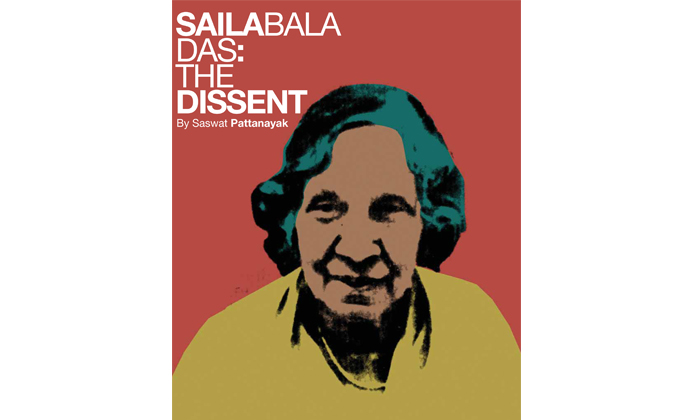What does one say about a woman who transcends regional barriers, overcomes colonial hangups, challenges dominant nationalist ethos, skews gender imbalances to her favour, prominently uses her privileges to empower the oppressed, and becomes a rebel with a cause; without a pause?
To say Sailabala Das was a maverick would be simplistic. Masquerading as a perennial iconoclast, she was a devoted freedom fighter against colonialism, and a thoughtful dissenter against domestic patriarchy – the two major strands of oppressive legacies engulfing India prior to being declared a sovereign republic.
Sailabala was born a Bengali, but following an untimely demise of her parents, she was adopted by the founding father of modern state of Orissa, Madhusudan Das. Considering the prevailing politico-cultural tensions between Orissa and Bengal, her state of being was never easy. Given the conformist values demanded of women all across the country, her western education and mannerisms were not perceived as politically correct either. Moreover, being the daughter of the greatest of Oriya nationalists came with socially unsettling demands.
Then again, she was never alien to going against the current. Sailabala emulated her father at every step of her life, and learned to question the status quo without fear or favour. Mr Das, a born Hindu, clearly disgusted with the inherently oppressive caste system, had converted to Christianity, a purely unpopular move during the most important phase of freedom struggle in India. M S Das was himself a bundle of profoundly beautiful contradictions: rooted in English education, he was a literary giant in Oriya language; a progressive lawyer for the masses while being a legislator for British India; a radical male feminist; a Gandhian who wore a coat with lapels; an industrialist who practised manual labour.
Sailabala drew her source of moral courage from Madhubabu, and was never wary of instantly acknowledging her privileges of being raised within an unorthodox setup that challenged canonical religious orders. At Bethune School, Calcutta, when the principal asked her not to mingle with non-Christian girls, her curt retort was “There were things I could learn from them.” During the days of examinations, when students were offering ten rupees as religious prayer offering, she famously said, “I am willing to give even Rs 20 towards feeding of poor girls, but not even one to make one pass my examination through the prayer of another.”
At a time when women were not allowed higher education, she found herself absorbed amidst socio-political debates in the library of Mr Das, which was the breeding ground for intellectuals of that era. In a documented conflict with the District Magistrate and District Judge – both European racist men – she insisted that not only herself, but even her ayahs were to board the same coach as the white men. When she was taunted to be a “native”, she refused to be insulted. “I am a native woman and I am proud of it,” she said.
For the native men and women, in 1903, she formed the Utkal Young Men’s Association and managed the Utkal Young Women’s Association. At a time when women were not allowed higher education, she championed the cause and fought against bureaucracy at the Ravenshaw Girls’ School as its principal. She was instrumental in creation of the first women’s college in Orissa, the main building of which was gifted by her. She started a Hindu widow’s training school to train widows to become high school teachers. On the political front, she started several branches of All-India Women’s Conference. She established Orissa Nari Seba Sangha in 1941 for social welfare of women. Indian National Council for Women held its biennial conference in Cuttack, under her leadership. She extended her reach to Bihar, where she became the first woman inspector of prison cells in Patna, first woman to join the management committee of the Prince of Wales Medical College and became the Syndicate member of Patna University.
Sailabala became the first woman Honorary Magistrate of India, adjudicating over 600 cases a year. She demanded justice for the downtrodden: “I found that poor people were often prosecuted, whereas the gentry escaped from being punished. Are the rich to be exempted?” She feared none, and much to the chagrin of the establishment, she had the car of Chief Justice stopped on the road on traffic rule violation grounds. Sailabala maintained a position: “He will be fined the maximum as being the Chief Justice, he should have known the law better!”
Even Gandhiji was not spared. When he visited Orissa in 1927, Sailabala escorted him throughout. At her residence that night, Gandhiji asked her to introduce charkha to women of Orissa. She refused, saying it was not the sole method of economic emancipation. Industrialization processes had their benefits too, or else motorcars and watches should also be discarded, she argued with him.
Even as Gandhiji was lectured on western virtues, Sailabala breached the protocol and wore Indian Saris to make headlines while meeting with King Edward, Queen Alexandra and the Vatican Pope, when she refused to wear western clothing for such formal meetings. Typical to her progressive flamboyance, Sailabala challenged the last bastion of conservatism when she entered the Lord Jagannath Temple in Puri, fully aware that she was a Christian. She caused an unforeseen commotion in the history of the temple that famously had denied entry to Lord Curzon himself!
In view of her multifarious contributions as educator, magistrate, prison reformer and social activist, when Sir Edward Gait, the last Lieutenant-Governor of Orissa and Bihar wished to confer the Kaiser-I Hind gold medal upon her, she quite characteristically declined it. Never to bow down to authorities, forever striving to make her country a truly progressive one by implementing women’s education, working class rights and nonconformist principles, Sailabala remains largely unknown, but vastly inspirational.














